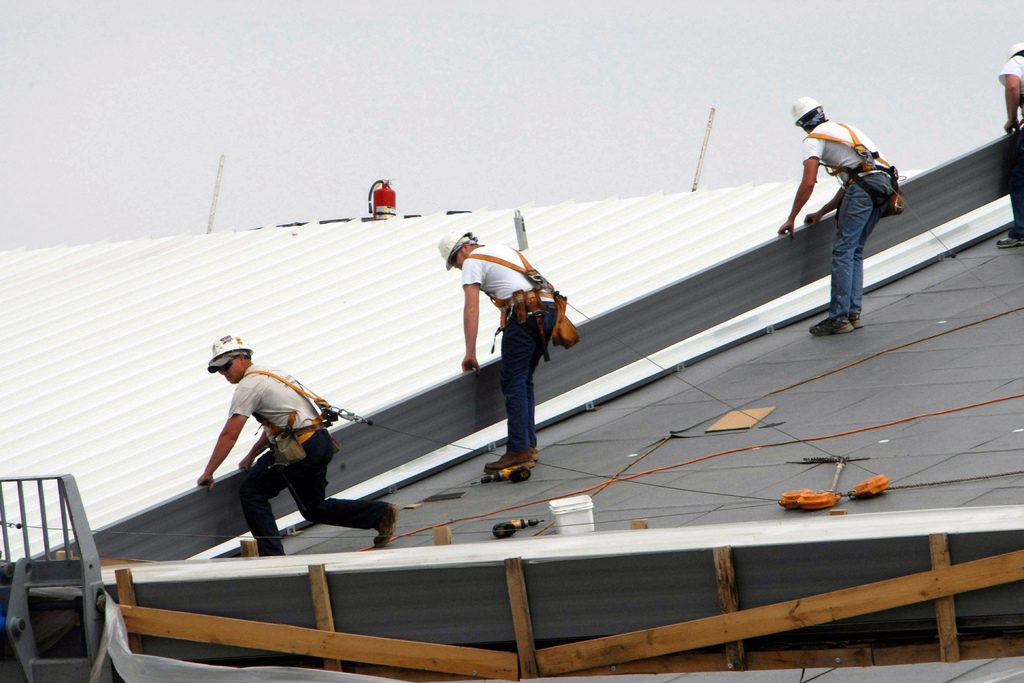How to Examine Various Roof Options for Your Building Requirements
Reviewing roofing alternatives for your structure requires a comprehensive technique that takes into consideration different variables such as the meant use of the structure, local environment conditions, and material qualities - Perrysburg Roofer. It is essential to consider the advantages and downsides of different roof covering types, from asphalt roof shingles to metal and clay floor tiles, while additionally factoring in initial expenses and lasting maintenance.
Evaluating Your Structure's Needs
To properly assess roofing choices, start by extensively evaluating your structure's demands. Start by taking into consideration the structure's intended usage, as various structures might require differing roof requirements. For circumstances, household roof coverings commonly focus on appearances and insulation, while business buildings may focus on durability and load-bearing ability.
Following, review the local environment conditions that will impact roof covering performance. Elements such as temperature variations, rainfall levels, and wind patterns can influence material option and style. A roof system that masters a pleasant environment might not do as well in locations vulnerable to heavy snowfall or severe warmth.
Additionally, examine the architectural honesty of your structure. Make sure that the existing framework can support the selected roof materials, specifically if considering larger options. It is likewise important to evaluate any kind of regional building codes or policies that may determine details demands for roof.

Comparing Roof Materials
As soon as an extensive evaluation of your structure's requirements has actually been completed, the following action involves comparing numerous roofing products. Each material provides unique advantages and negative aspects, making it vital to straighten your selection with your certain requirements and conditions.
Asphalt roof shingles are widely acknowledged for their affordability and convenience of setup, making them a prominent option for property structures. On the other hand, steel roof covering, known for its toughness and longevity, can withstand rough climate condition but might include a higher first investment.
Clay and concrete ceramic tiles give excellent thermal insulation and aesthetic allure, especially for Mediterranean-style style, yet they require an even more durable architectural support as a result of their weight. Wood shakes offer a natural look and excellent insulation buildings yet might require much more maintenance and are at risk to fire dangers.
Assessing Expense and Budget
Assessing your roof options requires a mindful evaluation of expense and budget plan factors to consider. The total allocate a roof covering task consists of a number of elements, consisting of product expenses, labor costs, maintenance, and potential lasting financial savings. It is necessary to develop a clear spending plan prior to checking out particular roofing materials, as this will lead the decision-making process and assist you stay clear of overspending.
Begin by obtaining quotes from several contractors to understand labor costs in your region. Ensure that these estimates consist of all required solutions, such as elimination of the old roofing, installment, and any kind of added features, like insulation or ventilation enhancements - Perrysburg Roofer. Next, assess the expense of different roofing products, thinking about both initial installment costs and anticipated lifespan

Understanding Power Performance
Power effectiveness plays a crucial role in the choice of roof covering products and systems, substantially influencing both power intake and overall comfort within a building. A well-chosen roof covering can enhance thermal performance, lowering the demand for home heating and cooling systems, which subsequently decreases energy expenses and decreases ecological effect.
When assessing roof covering options, consider materials that reflect rather than soak up warmth. Furthermore, appropriate insulation and air flow are crucial to optimize the energy efficiency of the whole roof covering system.
Another crucial element is the roofing system's durability and upkeep requirements. Resilient materials that call for much less frequent replacement add to lasting power cost savings. The energy effectiveness of a roof covering system helpful resources can additionally be evaluated through its conformity with well established sustainability ratings such as Power STAR or LEED.
Considering Aesthetic Allure
A roofing system's aesthetic allure considerably affects the general look of a building, complementing its architectural design and enhancing aesthetic appeal. Roofing Contractor. When reviewing roofing options, it is vital to consider like it exactly how the picked product, shade, and style will harmonize with the existing framework and neighborhood. A well-designed roofing can elevate also the easiest of buildings, transforming them into visual focal factors
Different roof covering products supply different aesthetic qualities. For example, traditional tiles may stimulate a traditional charm, while metal roof can impart a modern, streamlined look. Furthermore, the shade of the roofing product plays an essential duty; lighter shades can make a building appear even more spacious, while darker tones may create a cozier ambiance.
Furthermore, building elements, such as dormers and eaves, can enhance the roof covering's aesthetic influence. It is a good idea to consult with expert developers or engineers to make certain the chosen roof covering choice straightens with the overall layout intent. Ultimately, a roof covering must not just give practical advantages but likewise add positively to the structure's aesthetic, showing the owner's preference and the character of the surrounding environment.
Conclusion
